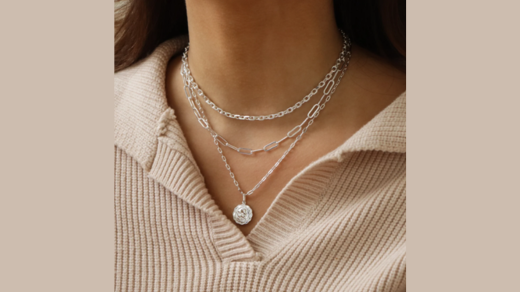The Inspiration Behind Jewelry Designs

Jewelry has long been revered not just for its intrinsic beauty, but also for its ability to convey meaning, cultural significance, and personal style. Behind every exquisite piece of jewelry lies a story of inspiration, creativity, and craftsmanship. From ancient civilizations to modern designers, the evolution of jewelry design has been shaped by a myriad of influences that reflect societal values, artistic movements, and individual creativity.
Ancient Influences and Traditions
Early Beginnings
The history of jewelry dates back thousands of years, with early civilizations such as the Egyptians, Mesopotamians, and Greeks adorning themselves with intricate ornaments crafted from materials like gold, silver, and gemstones. Jewelry during these times served multifaceted purposes, symbolising status, spirituality, and protection.
Symbolism and Rituals
In many ancient cultures, jewelry held profound symbolic meanings. For example, Egyptian jewelry often featured motifs like the scarab beetle, symbolising rebirth and protection. In Mesopotamia, jewelry adorned with intricate patterns and gemstones reflected religious beliefs and social hierarchy. These ancient designs continue to inspire modern interpretations that blend historical significance with contemporary aesthetics.
Cultural Influences and Regional Styles
Global Diversity
The diversity of jewelry design is a testament to the rich tapestry of global cultures and traditions. From the intricate filigree of Indian jewelry to the bold, geometric patterns of African adornments, each region’s jewelry style reflects unique cultural narratives, craftsmanship techniques, and materials indigenous to the area.
Traditional Techniques
Traditional jewelry-making techniques, passed down through generations, continue to play a pivotal role in preserving cultural heritage. For instance, Native American jewelry often incorporates silverwork and turquoise stones, embodying spiritual beliefs and connections to nature. In Japan, traditional techniques like Mokume-gane create intricate patterns that symbolize natural elements such as wood grain or flowing water.
Artistic Movements and Design Innovations
Art Nouveau
The late 19th and early 20th centuries saw the emergence of Art Nouveau, an artistic movement characterized by flowing, organic forms inspired by nature. Jewelry designers during this period, such as René Lalique, embraced the use of enamel, horn, and unconventional materials to create pieces that were both innovative and expressive of the era’s artistic ideals.
Art Deco
Following World War I, the Art Deco movement swept across the globe, influencing jewelry design with its bold geometric shapes, vibrant colors, and use of luxurious materials like diamonds, jade, and onyx. Art Deco jewelry exuded a sense of glamour and sophistication, reflecting the optimism and opulence of the Roaring Twenties.
Contemporary Influences and Design Trends
Fashion and Pop Culture
In today’s interconnected world, jewelry design draws inspiration from a myriad of sources, including fashion trends, celebrity style icons, and social media influencers. Designs often reflect current tastes and preferences, with minimalist styles gaining popularity alongside bold statement pieces that capture attention and spark conversation.
Sustainable Practices
Increasingly, jewelry designers are embracing sustainability by using ethically sourced materials, recycled metals, and eco-friendly production methods. This shift towards sustainability not only addresses environmental concerns but also resonates with consumers who value transparency and ethical craftsmanship in their jewellery purchases at Tana Mongeau jewelry.
Innovations in Materials and Technology
Experimental Designs
Advancements in technology have opened new avenues for experimentation in jewelry design. From 3D printing to laser cutting, designers can create intricate patterns and unique textures that were once unimaginable. This fusion of traditional craftsmanship with cutting-edge technology has led to the emergence of avant-garde jewelry pieces that push the boundaries of artistry and innovation.
Alternative Materials
Beyond traditional metals and gemstones, contemporary jewelry designers are exploring alternative materials such as ceramic, acrylic, and even recycled plastics. These materials offer versatility in design while catering to consumers’ evolving tastes for sustainable and unconventional jewelry options.
Conclusion
The inspiration behind jewelry designs is as diverse and dynamic as the cultures and artistic movements that shape our world. From ancient traditions to modern innovations, jewelry continues to evolve as a medium of self-expression, cultural identity, and artistic experimentation. Whether inspired by historical motifs, influenced by contemporary trends, or driven by sustainable practices, each piece of jewelry tells a unique story that resonates with its wearer and reflects the ever-changing landscape of fashion and art.




